
Roots
To hold a single strand of textured hair is to cradle a testament to history, a living chronicle of ingenuity and resilience etched into its very being. For generations untold, across the sun-drenched savannas, through the harrowing passage of the Middle, and into the vibrant diaspora, the practice of head wrapping has offered a tender guardian. It is an ancestral whisper, woven into the daily rhythms of Black and mixed-race lives, shielding this precious heritage from the elements, from curious glances, and often, from deliberate harm. This act of covering the head extends beyond simple adornment; it speaks to profound connections—to climate, to spirit, to community, and to the enduring wisdom of those who came before.
Consider the elemental biology of textured hair, so distinct in its helical structure. Unlike straight hair, the coiled, kinky, or wavy patterns of textured strands possess an inherent predisposition towards dryness. The natural oils, sebum, produced by the scalp, find it challenging to travel down the curves and bends of each strand, leaving the ends particularly vulnerable.
This structural reality makes moisture retention a central preoccupation for textured hair care. Historically, understanding this inherent characteristic shaped practices of preservation and adornment, long before scientific treatises codified terms like ‘porosity’ or ‘cuticle health.’

Hair Anatomy and Its Ancestral Understanding
The very form of textured hair, its unique helical twists and turns, often means fewer cuticle layers lie flat against the hair shaft. This configuration, while creating breathtaking volume and visual interest, also makes the hair more prone to losing moisture to the surrounding environment and susceptible to physical abrasion. Ancestral communities, without microscopes or chemical analyses, observed these qualities through lived experience. They knew that hair exposed to harsh sun, abrasive winds, or the dust of daily life would become parched and brittle.
The wisdom of the elders recognized that external protection was a foundational pillar of hair health, much like protecting delicate plants from harsh weather. This acute observation of environmental impact on hair’s vitality laid the groundwork for the protective custom of head wrapping.
Our forebears comprehended the hair not merely as biological tissue, but as a spiritual antenna, a crown, and a statement of identity. To safeguard the hair was to safeguard the self, the lineage, the very soul. This deep, reciprocal relationship with hair informed every aspect of its care, from the ingredients used to the rituals observed, all under the overarching shelter of the headwrap.
The tradition of head wrapping for textured hair weaves together ancestral wisdom, material science, and cultural symbolism to offer profound protection.
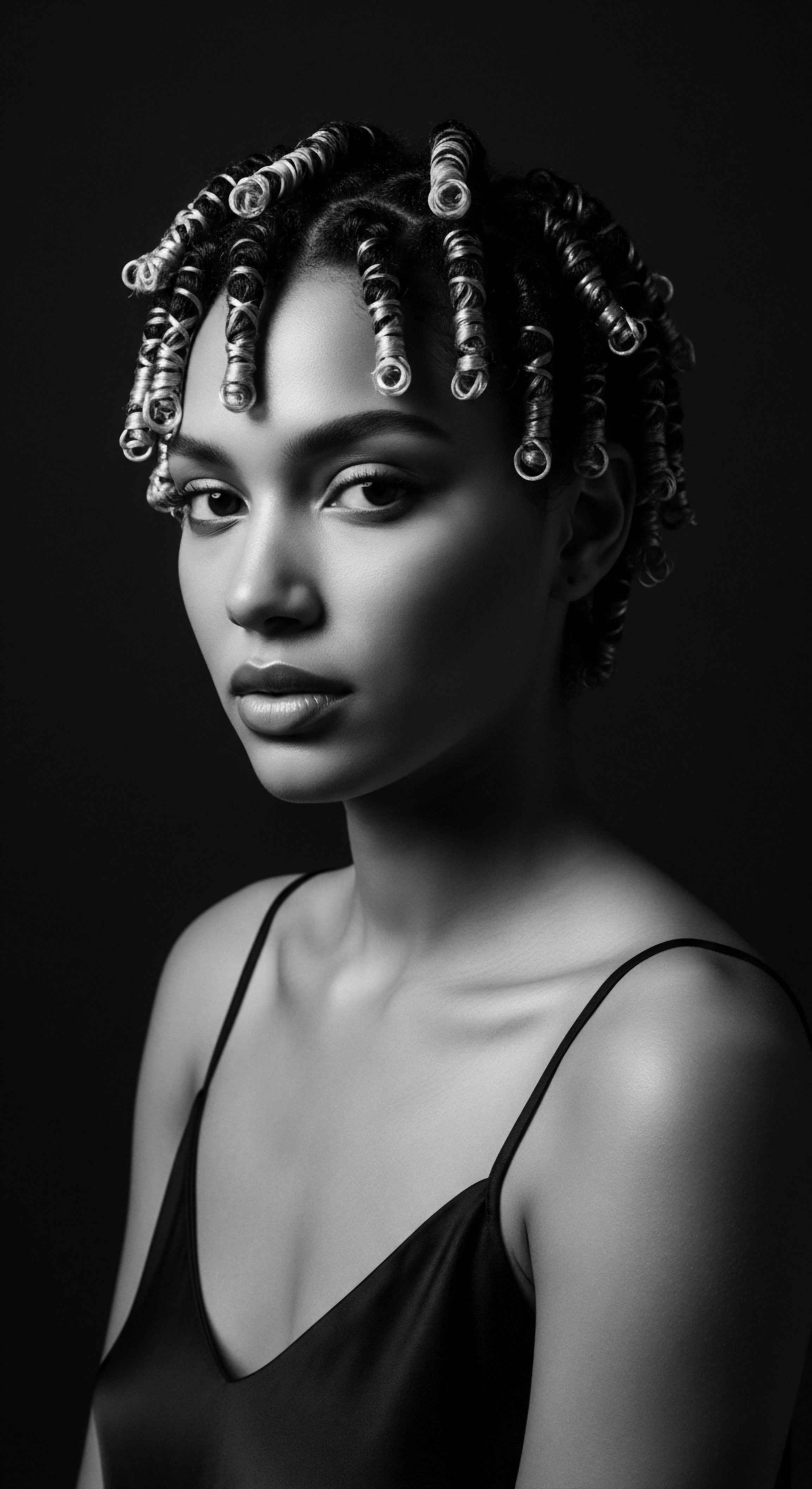
Early Systems of Textured Hair Classification
While modern hair typing systems, like those using numbers and letters, offer a contemporary framework, traditional communities understood hair diversity through a more fluid, experiential lens. Hair was categorized by its feel, its response to moisture, its ability to hold a style, and its appearance, often linking these qualities to family lineage or regional characteristics. These classifications were not rigid scientific taxonomies but practical guides for care.
A person with tightly coiled hair, for example, might favor richer butters and more frequent wrapping, instinctively understanding its particular need for moisture sealing and environmental shielding. This deep, intuitive knowledge of different hair structures within a community, passed down through generations, shaped the specific textiles and wrapping methods employed.
For instance, the use of smooth, tightly woven fabrics was common for highly coiled hair, minimizing snagging and friction. More open weaves might have been used for looser textures, offering breathability while still providing a shield. The materials chosen were often those readily available in the environment, yet their properties were understood through generations of trial and observation.
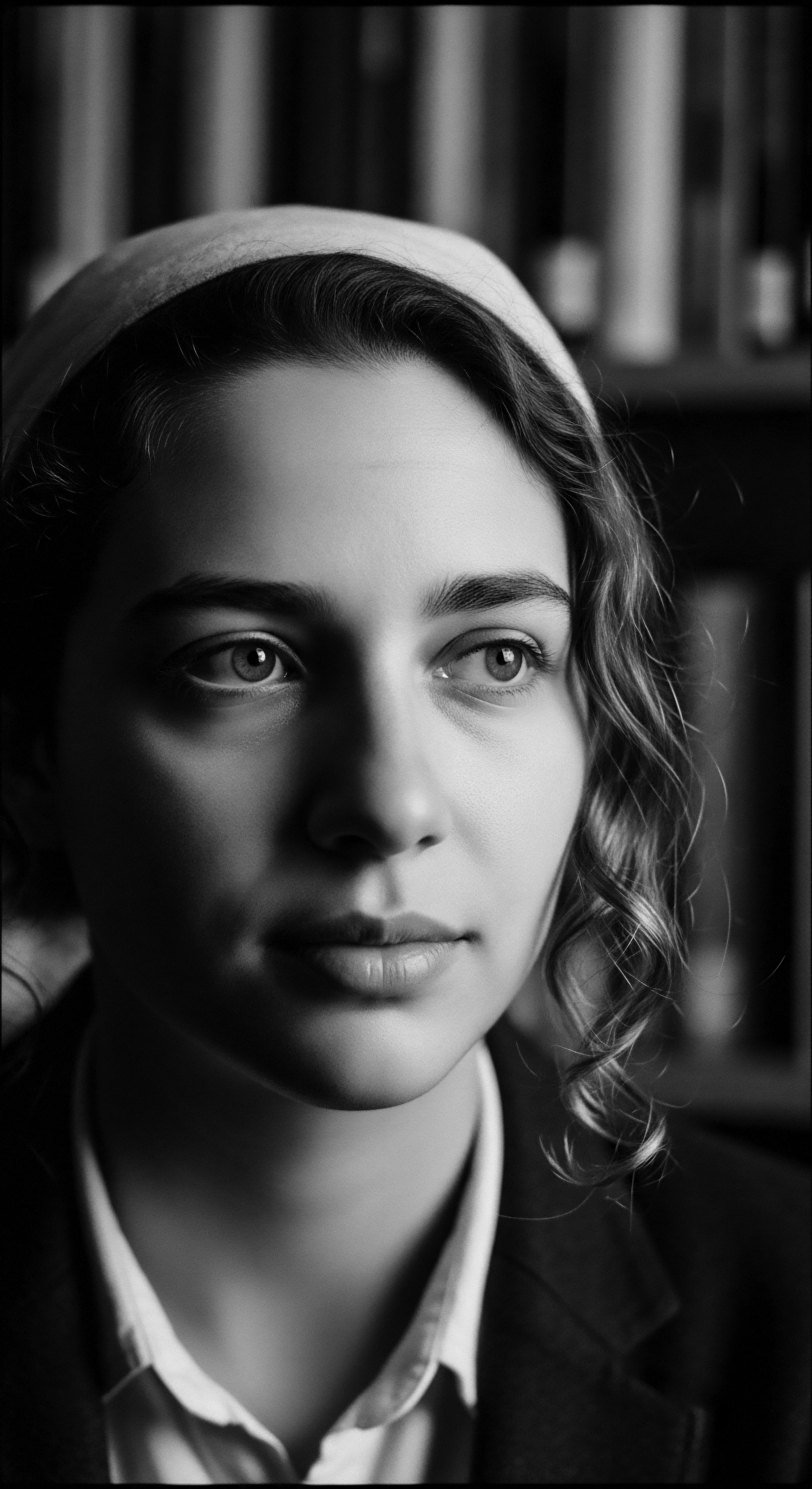
Ritual
The act of head wrapping is a performance of tradition, a living ritual passed from hand to hand, generation to generation. It is not merely a piece of fabric; it is a repository of shared experience, a stylistic conversation across time that speaks volumes about heritage, status, and self-preservation. This ancient practice, refined across centuries, integrates material knowledge with a deep understanding of hair’s physical vulnerability, offering a powerful shield for textured strands.
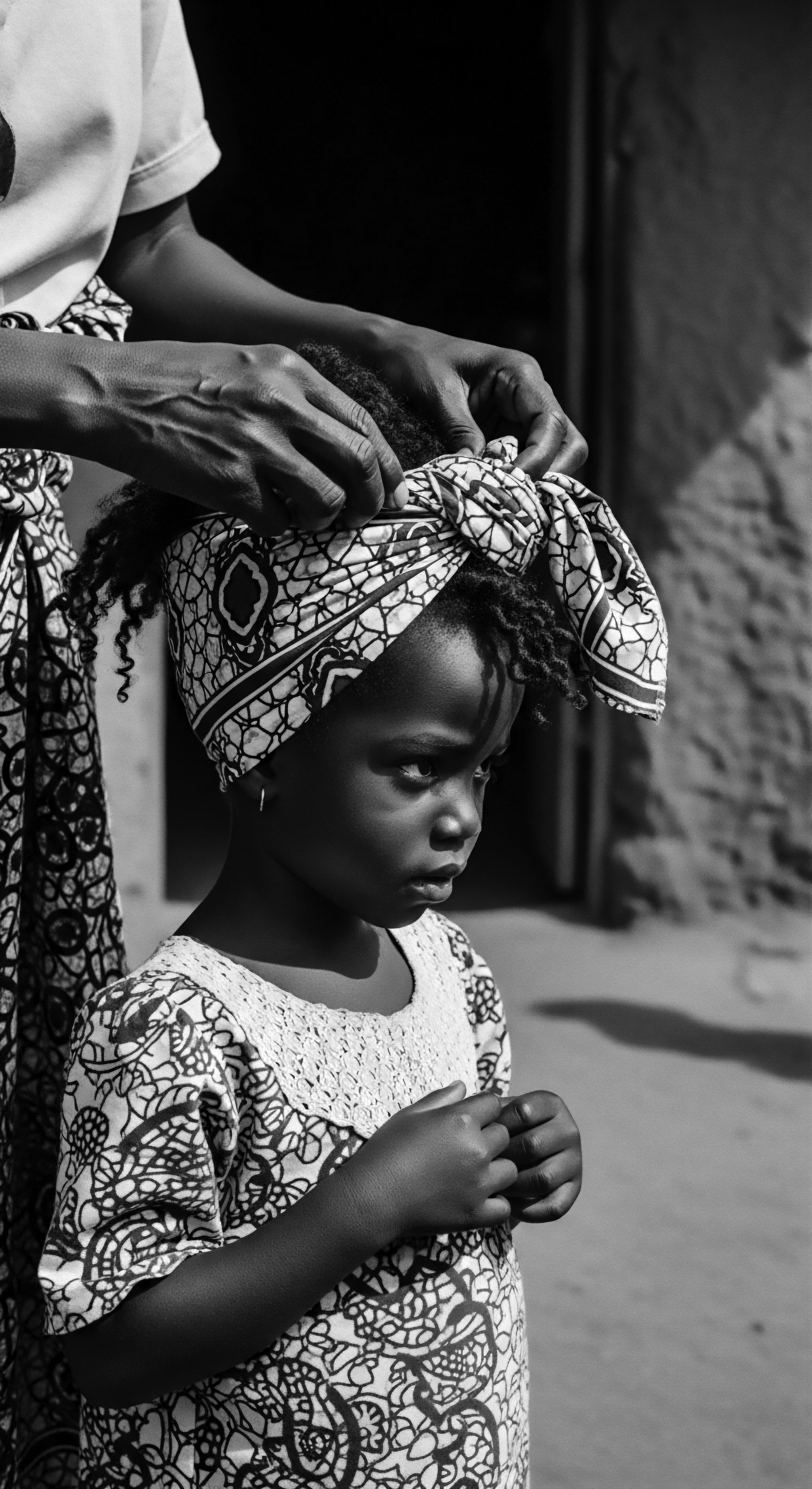
Traditional Styling and the Headwrap’s Protective Function
Across Africa and throughout the diaspora, textured hair was often styled in intricate braids, twists, and coils that were inherently protective. These styles, which could take hours or even days to create, reduced daily manipulation and minimized exposure to environmental stressors. The headwrap served as the ultimate safeguard for these labor-intensive creations, preserving their longevity and integrity.
A skillfully tied headwrap encapsulated the hairstyle, shielding it from dust, harsh sunlight, and biting winds. This practical application meant less frequent restyling, which in turn reduced mechanical stress and breakage, allowing for significant length retention over time.
Consider the women of various West African societies, where elaborate hairstyles were markers of marital status, age, or even spiritual connection. The gele of the Yoruba, for instance, a sculpted headdress often reaching impressive heights, was not only a statement of grace but also a protective shell for meticulously braided hair underneath. The practice of wrapping ensured these cultural expressions remained intact, allowing the hair to thrive in its carefully arranged state.
Head wrapping extends the life of intricate protective styles, historically allowing textured hair to retain moisture and flourish shielded from daily wear.
Historically, different regions embraced distinct materials, each with its own properties.
- Cotton ❉ Widely accessible and breathable, cotton was a common choice for everyday wraps, offering light protection from environmental factors and absorbing excess moisture from the scalp, while still allowing air circulation.
- Silk ❉ Revered for its smooth texture, silk became a prized material for head wraps among those who could access it, particularly in wealthier communities or for ceremonial occasions. Its non-abrasive surface reduced friction against the hair cuticle, minimizing breakage and preserving moisture, a benefit validated by modern science.
- Wool ❉ In cooler climates or for specific spiritual practices, denser materials like wool might have been used, providing warmth and additional environmental shielding.
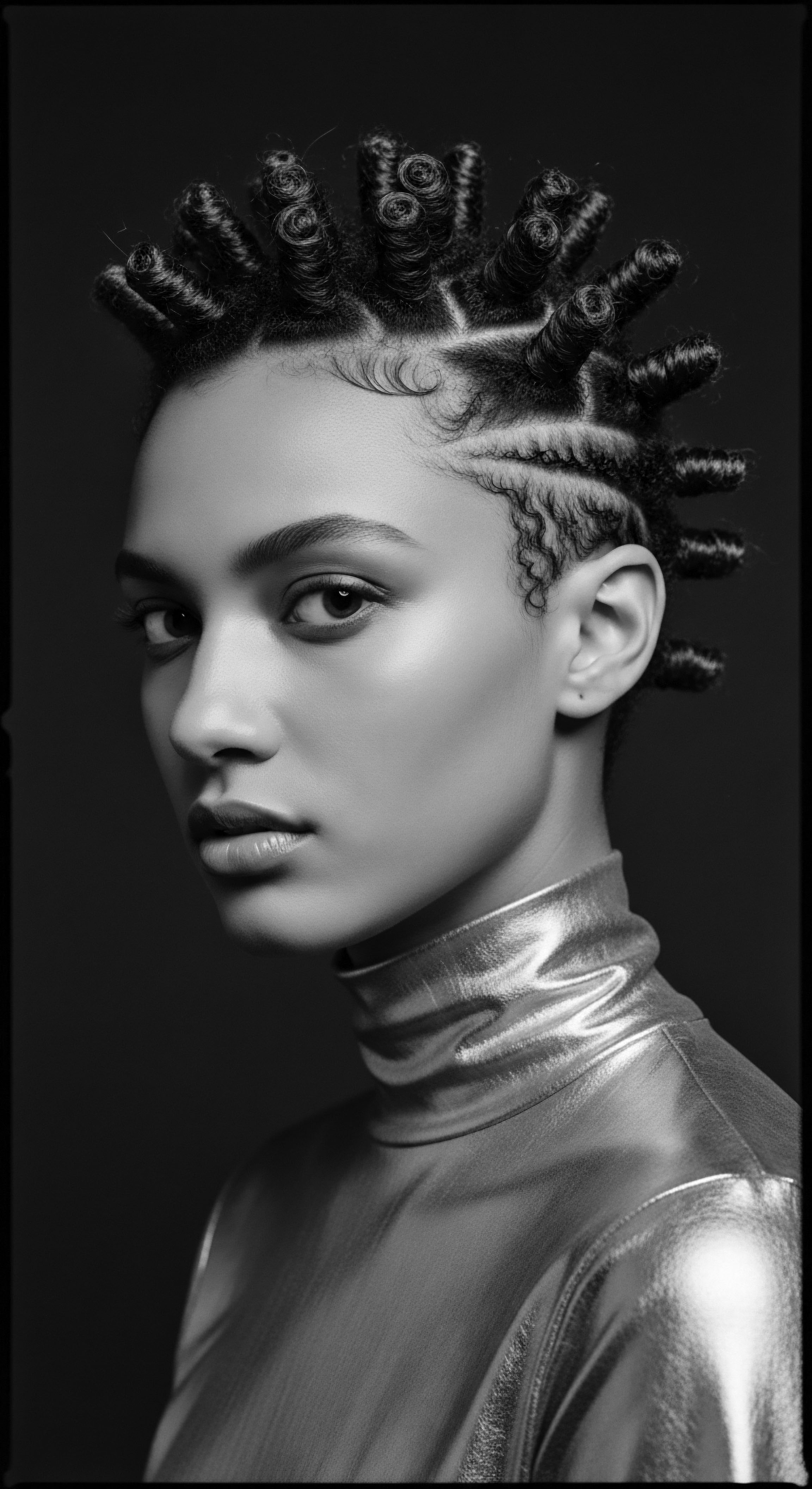
Head Wrapping as an Act of Resistance and Preservation
The history of head wrapping for textured hair cannot be disconnected from the transatlantic trade and the subsequent experiences of enslavement and colonization. In many instances, what began as a functional and cultural practice became an enforced marker of subjugation. In 18th-century Louisiana, for example, the Tignon Laws mandated that women of color, whether enslaved or free, cover their hair in public to visually distinguish them from White women and diminish their perceived allure. Yet, even under such oppressive mandates, Black women transformed the tignon into an act of profound resistance and vibrant self-expression.
They used luxurious fabrics, adorned their wraps with feathers and jewels, and styled them with such creativity that the very symbol of their supposed inferiority became a declaration of dignity and an assertion of identity. This demonstrates a deep, ancestral understanding of hair as a personal and collective statement, something worthy of protection both physically and culturally.
This historical turning of an oppressive tool into a tool of personal and collective power is a strong illustration of the resilience embedded within textured hair heritage. The wrap became a private sanctuary for the hair and a public display of an unbreakable spirit.
| Material Type Coarse Plant Fibers |
| Historical Application Pre-colonial West Africa, daily wear for environmental shielding. |
| Hair Protection Benefit Physical barrier against dust, sun, and abrasive elements. |
| Material Type Woven Cotton |
| Historical Application Widespread across Africa and diaspora for various uses. |
| Hair Protection Benefit Breathability, absorption of sweat, moderate friction reduction. |
| Material Type Silk Fabrics |
| Historical Application Used for special occasions or by higher status individuals across Asia, Africa, and later, the diaspora. |
| Hair Protection Benefit Smooth surface minimizes friction and breakage, helps retain moisture. |
| Material Type Madras Cloth |
| Historical Application Caribbean during colonial era, often enforced but then creatively adapted. |
| Hair Protection Benefit Provided covering and allowed for complex, defiant styling. |
| Material Type These materials, chosen through generations of trial, offered practical and symbolic safeguarding for textured hair. |

Relay
The protective legacy of head wrapping for textured hair is a continuum, a living testament that stretches from ancient ancestral wisdom to contemporary wellness practices. This practice is not simply about covering the hair; it is a holistic approach to preserving hair vitality, a deep understanding of its needs, rooted in centuries of observation and communal knowledge. The relay of this wisdom through generations speaks to its enduring value, especially regarding the unique characteristics of textured strands.
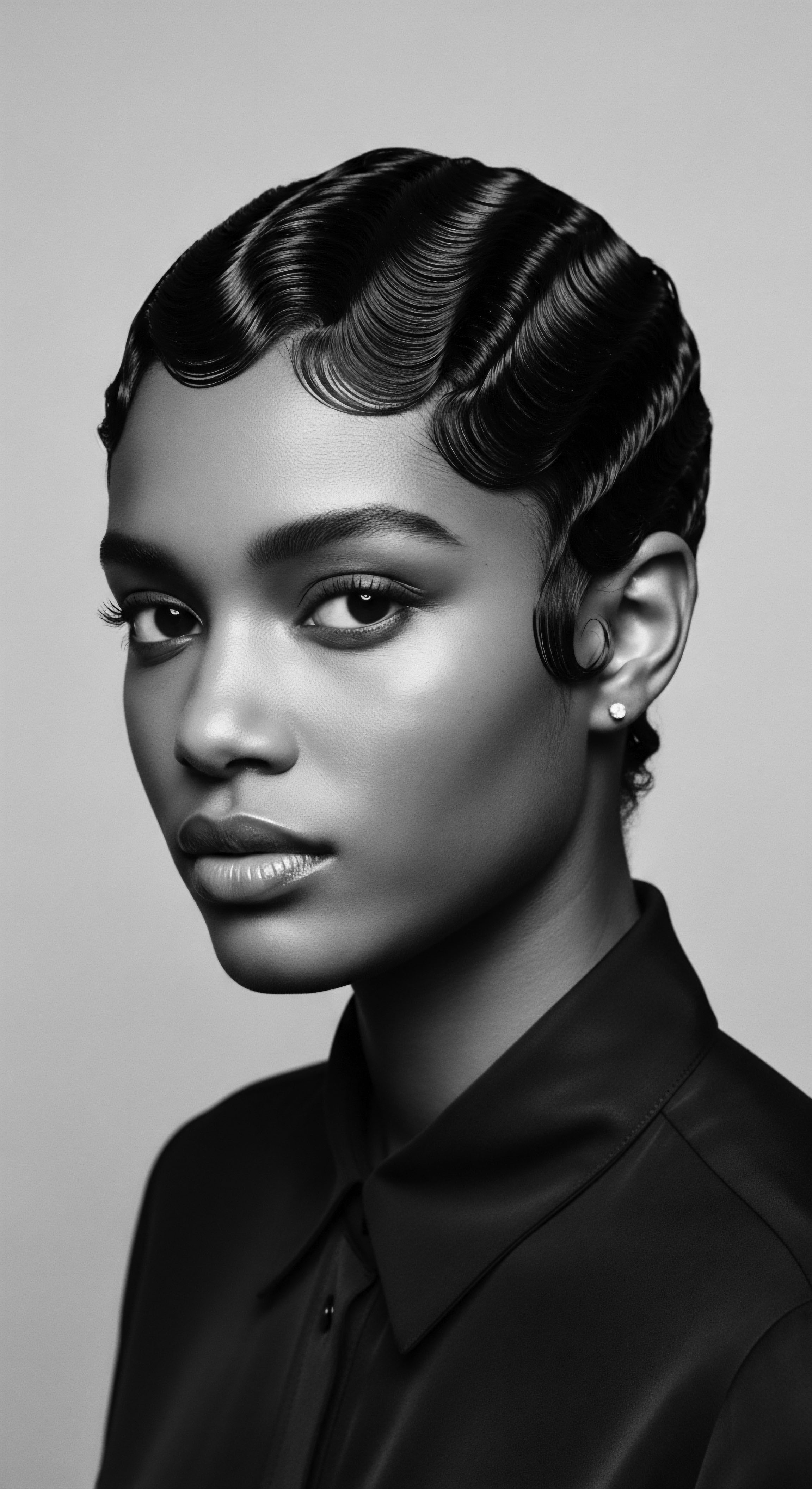
Nighttime Sanctuaries and the Bonnet’s Ancestral Lineage
The concept of protecting hair during sleep is not a modern innovation; it is a practice with deep historical precedent, particularly within Black and mixed-race communities. Before the widespread availability of commercially produced satin bonnets, women used silk scarves or smooth cloths to wrap their hair before slumber. This deliberate act served to create a gentle, enclosed environment for the hair, minimizing friction against rough sleeping surfaces, such as cotton pillows.
Cotton, with its absorbent and abrasive fibers, can draw moisture from the hair and snag delicate strands, leading to dryness, frizz, and breakage. By contrast, smooth fabrics allow the hair to glide, preserving moisture and maintaining the integrity of hairstyles, whether braids, twists, or natural coils.
This nighttime ritual was a crucial component of preserving hair health. It allowed the natural oils and any applied moisturizing treatments to remain in the hair, rather than being absorbed by bedding. The knowledge of this protective measure was transmitted orally, from mother to daughter, elder to youth, ensuring that the hair, often styled with great care and time, was preserved through the night, ready to face the next day with minimal manipulation. This continuous protection, spanning day and night, directly supported the health and growth of textured hair.
One powerful historical example illustrating this practice comes from the oral histories of formerly enslaved people. Accounts reveal that even under the most brutal conditions, Black women found ways to protect their hair, often using scraps of smooth cloth as wraps for nighttime protection to mitigate the damage caused by harsh labor conditions and lack of proper hair care products (Kynard, 2013, p. 119). This collective effort to preserve hair health, even in defiance of systemic oppression, highlights the intrinsic value placed on hair and the ingenuity applied to its care.

Nourishment and Natural Barriers
The efficacy of head wrapping is often amplified by the application of traditional emollients and protective agents. Historically, communities across Africa and the diaspora incorporated natural oils and butters into their hair care regimens, many of which are now validated by modern scientific understanding for their moisturizing and sealing properties. These substances created a lipid barrier on the hair shaft, reducing moisture loss, while the headwrap provided an additional physical shield against environmental aggressors.
For instance, the use of Shea Butter (Butyrospermum parkii), indigenous to West Africa, has been a cornerstone of hair care for centuries. Its rich fatty acid profile provides profound moisture, and when sealed with a headwrap, its benefits are amplified. Similarly, Coconut Oil (Cocos nucifera), prevalent in coastal African communities and throughout the Caribbean, offers penetrating moisture and protein protection.
Consider a traditional hair care session ❉ after cleansing, perhaps with a gentle clay like Moroccan rhassoul clay, rich butters and oils would be massaged into the hair and scalp. Then, the hair would be carefully styled, perhaps into braids or twists, and finally, covered with a headwrap. This layered approach—moisture, protective style, and physical barrier—worked synergistically to shield the hair from dryness, breakage, and environmental damage.
This integrated approach, blending topical application with a protective covering, reveals a sophisticated ancestral understanding of hair biology and environmental factors. The headwrap served as the final seal, a tender cocoon for these nourishing practices.
The historical use of head wraps, combined with traditional emollients, created a potent defense against environmental stressors for textured hair.
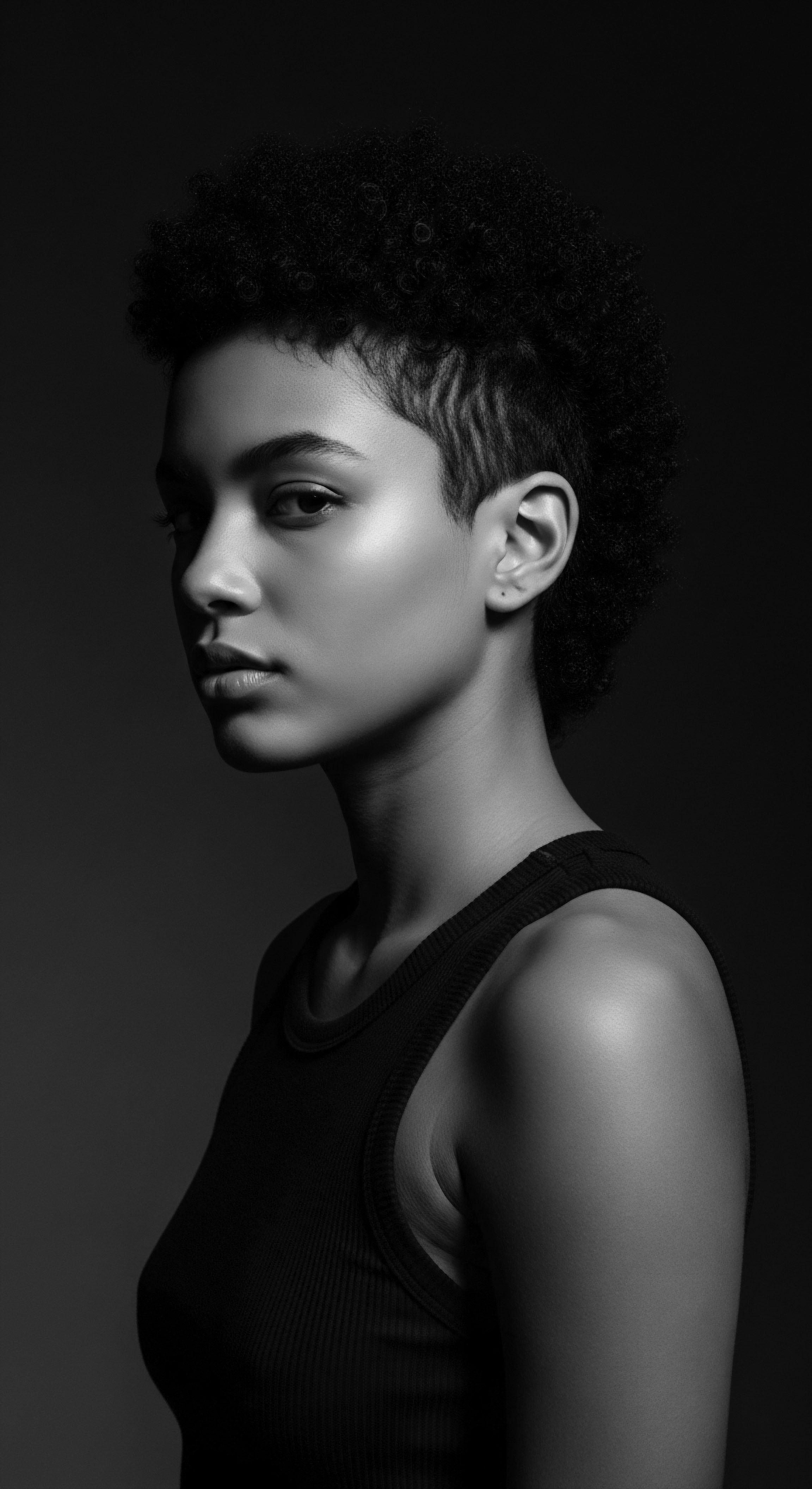
How do Head Wraps Provide a Physical Defense for Hair?
The physical barrier offered by a headwrap is fundamental to its protective function. Textured hair, with its inherent coil patterns, is more susceptible to tangling and breakage from external forces. A wrap encases the hair, minimizing exposure to:
- Environmental Elements ❉ Sunlight, dust, wind, and pollution can strip hair of moisture and cause physical damage. A wrap acts as a shield, preventing these aggressors from direct contact with the hair strands. This is especially true for prolonged outdoor activity or travel, where hair might otherwise become excessively dry or brittle.
- Mechanical Abrasion ❉ The constant rubbing against clothing, furniture, or other surfaces can cause friction, leading to frizz, split ends, and breakage, particularly for delicate hair textures. A headwrap creates a smooth interface, significantly reducing this wear and tear throughout the day.
- Excessive Manipulation ❉ By securing a hairstyle underneath, head wraps reduce the need for frequent touching, styling, or restyling. This decrease in manipulation lessens stress on the hair follicles and shafts, promoting better hair retention and growth over time.
This multi-layered protection is particularly vital for hair that has been intricately styled, such as cornrows or individual braids, which can take many hours to complete. The headwrap preserves the style, extending its life and protecting the underlying hair from the elements, allowing individuals to maintain their look and protect their hair for longer periods. This historical wisdom aligns with modern protective styling advice, showing an unbroken chain of knowledge about hair health.

Reflection
To behold a headwrap today, whether in the vibrant streets of Accra, the bustling markets of Brooklyn, or upon the serene brow of a woman in prayer, is to witness a profound meditation on textured hair heritage. It is a living archive, breathing with the ancestral wisdom that understood the hair as a sacred extension of self, a chronicle of identity, and a repository of ancestral memory. The simple act of winding fabric around the head, a practice carried across continents and through generations, continues to speak volumes about protection, resilience, and the inherent beauty of Black and mixed-race hair.
This enduring tradition reminds us that the quest for hair wellness is not a contemporary invention. It is a dialogue that has spanned centuries, connecting us to the hands that first plaited, first oiled, first wrapped, all in recognition of hair’s delicate yet powerful nature. The very fiber of the headwrap, whether historically chosen for its smooth feel or its protective density, reflects an intuitive science, a knowledge passed down through the gentle cadence of shared care. It is a wisdom that sees the strands not just as protein filaments, but as extensions of a rich, unbroken lineage, worthy of diligent guardianship.
The headwrap, then, is a beacon. It illuminates the historical journey of textured hair, from its elemental biological characteristics understood through generations of lived experience, through the tender, communal rituals of its care, to its powerful role in voicing identity and shaping futures. It remains a visible homage to the ingenuity of our forebears, a quiet revolution of self-preservation that has always been, and will continue to be, an integral part of the Soul of a Strand.

References
- Katsande, Rukariro. “The history & meaning of head wraps across Africa.” Wilderness, 25 Jan. 2015.
- Kynard, Carmen. “Wrapping Our Heads ❉ Archiving Black Women’s Style Politics.” Education, Liberation & Black Radical Traditions for the 21st Century, 2013, pp. 115-132.
- Aghajanian, Liana. “A Beautiful Record of How Modern Headwraps.” The Wrap Life, 11 Jan. 2022.
- Gordon, E. E. The African Diaspora ❉ A History of Repression and Resistance. Routledge, 2008.
- Thompson, Robert Farris. Flash of the Spirit ❉ African and Afro-American Art and Philosophy. Vintage Books, 1984.
- Byrd, Ayana, and Lori L. Tharps. Hair Story ❉ Untangling the Roots of Black Hair in America. St. Martin’s Griffin, 2014.
- Mercer, Kobena. “Black Hair/Style Politics.” Welcome to the Jungle ❉ New Positions in Black Cultural Studies, Routledge, 1994, pp. 97-128.
